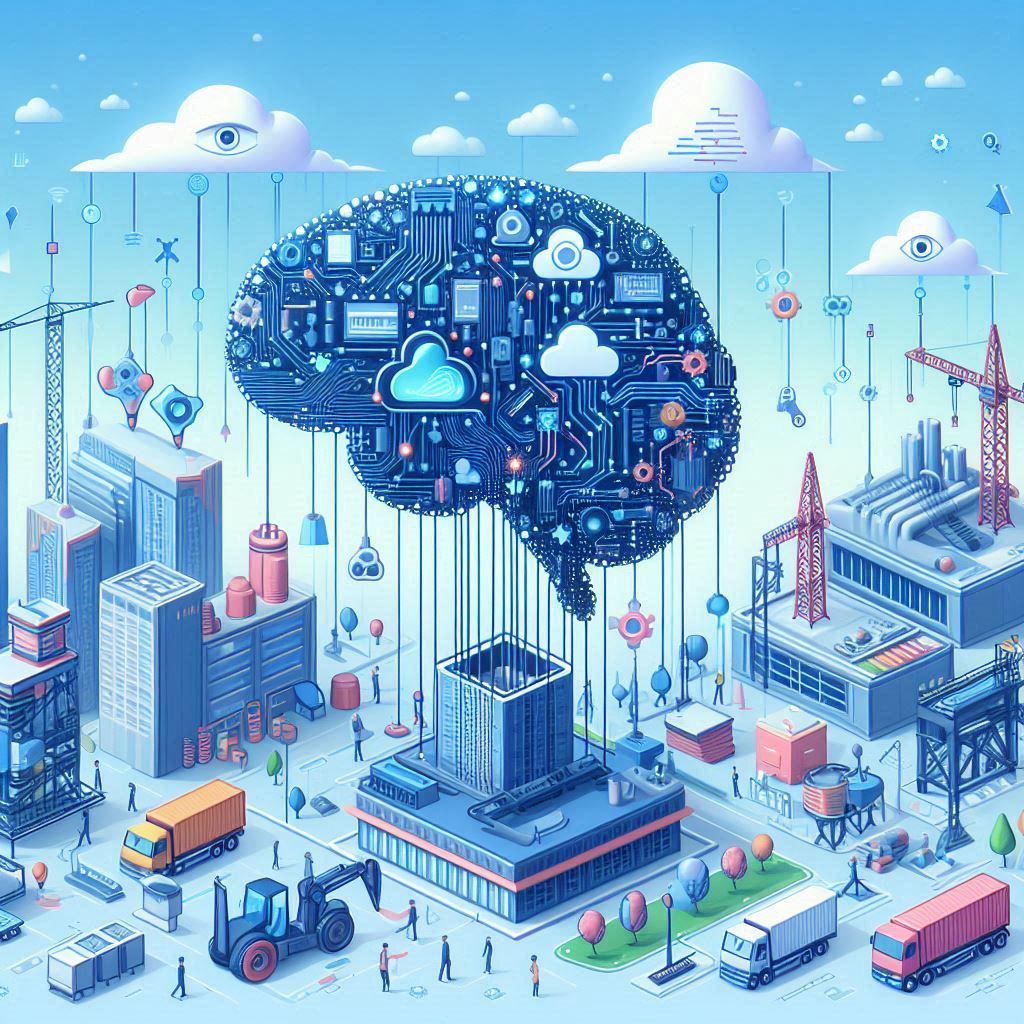Machine Learning Algorithms: Over the last decade, AI has transformed healthcare and entertainment. This change is driven by Machine Learning (ML) and Deep Learning. These words refer to several AI methods for addressing complicated issues, each with their own benefits.
Tech enthusiasts, data scientists, and AI developers must comprehend ML and DL distinctions. This tutorial will help you use these technologies in your profession or comprehend AI. We’ll discuss their definitions, uses, technical comparisons, real-world examples, and future forecasts.
Machine Learning and Deep Learning are changing our world. Let’s explain them.
Machine learning (ML) algorithms are revolutionising areas including healthcare and anticipating consumer trends. Business use ML to optimise operations, personalise consumer experiences, and automate decision-making.
ML algorithms improve patient outcomes by detecting diseases early, discovering drugs, and analysing medical images. Financial institutions utilise them for fraud detection, risk assessment, and algorithmic trading.
Data scientists, AI researchers, and tech enthusiasts must understand supervised, unsupervised, semi-supervised, and reinforcement learning ML algorithms. Choice of algorithm relies on data availability, task complexity, and processing resources.
The blog offers a vital reference to common ML methods including decision trees, neural networks, k-means clustering, and deep learning models. We will explain each method, its real-world applications, and the optimum implementation situations.
Learning ML techniques may improve your data analysis and system development skills, regardless of your background. Master the key methods behind today’s most breakthrough technologies to stay ahead in the AI revolution.
What Are Machine Learning Algorithms and Why Do They Matter?
Machine learning is a branch of artificial intelligence dedicated to instructing computers to learn from and adjust to data. Central to this domain are machine learning algorithms—methodical computational procedures that assist machines in recognising patterns, making decisions, and forecasting outcomes.
In essence, these algorithms empower AI systems to address intricate problems with greater efficacy. Whether utilised for customer segmentation in marketing initiatives or for disease diagnosis via pattern recognition, ML algorithms serve as the instruments propelling innovation. We will examine their classification and application in practical contexts.
Types of Machine Learning Algorithms
Supervised Learning
Operating with labelled datasets, supervised learning systems ensure that every input data point has a matching known output. For jobs requiring forecasts and classifications, these algorithms especially help.
One often used supervised learning method is Linear Regression, which aids in numerical value prediction—that is, future sales based on past patterns. Often used for categorisation difficulties, Decision Trees and Random Forest are perfect for organising consumer comments or assessing credit risk.
Another really useful tool, particularly useful in picture recognition and text categorisation activities, are Support Vector Machines (SVM).
Applications where historical data is available benefit much from supervised learning as it enables models to identify trends and provide reliable future projections.
Unsupervised learning
Unsupervised learning differs from supervised learning in not depending on labelled data. Rather, it finds within a dataset natural groups and underlying trends. When manually labelling data is neither time-consuming or practicable, this method is very helpful.
Popular unsupervised learning method K-Means Clustering clusters comparable data sets to find trends—mostly used in fraud detection and consumer segmentation. Principal Component Analysis (PCA) is another important method that helps simplify high-dimensional data so that visualising and analysis of it is simpler.
Applications include anomaly detection and market segmentation depend on unsupervised learning as it is a useful tool for revealing insights from unstructured, raw data.
Reinforcement Learning
Training models in reinforcement learning (RL) using a system of rewards and punishments contingent on their behaviour is In settings like robotics, gaming, and self-driving cars—where sequential decision-making is needed—it is very helpful.
Effective in tackling discrete action-space issues, including strategic game-playing and operational research, one well-known RL method is Q-Learning. More sophisticated methods, including Deep Q-Networks (DQNs), combine deep learning with reinforcement learning to manage challenging settings including autonomous driving.
Reinforcement learning is a fundamental method in artificial intelligence-driven automation and decision-making procedures as it enables systems to maximise their behaviours by means of ongoing learning from trial and error.
Popular Machine Learning Algorithms and Their Real-World Applications

From banking to healthcare to e-commerce to cybersecurity, machine learning techniques drive a vast spectrum of practical uses altering sectors including industry. These are few of the most often used machine learning techniques along with their applications in many fields.
1. Forecasting and Trend Predicting in Linear Regression
Predicting numerical values based on past data is accomplished using the basic but effective linear regression method. In business analytics, where firms use it to anticipate sales volumes, evaluate price patterns, and project housing costs, it is very helpful. E-commerce sites, for example, use linear regression to forecast future consumer demand, therefore enabling companies to effectively control inventory.
2. Random Forest and Decision Trees — wise Decision-Making
Both classification and regression problems make extensive use of decision trees and its ensemble equivalent, random forests. Through pattern recognition in big data, these systems enable companies to make wise judgements.
Retailers use decision trees for client segmentation, therefore customising their marketing plans depending on buying behaviour. Using them, financial institutions indicate aberrant spending trends in real time and identify fraudulent transactions. By examining patient symptoms and medical data, they help in illness diagnosis in healthcare.
3. Support Vector machines (SVM) for image recognition and classification
By clearly separating many data types, Support Vector Machines shine in classification problems. This makes them very good at text classification—that is, in email spam detection. Content moderation systems and search engines filter unsuitable or pointless material using SVM.
Furthermore important for image identification is SVM, which enables medical imaging diagnostics and face recognition algorithms to highly accurate object detection and classification.
4. K-Means Clustering — Anomaly Detection and Customer Segmentation
An unsupervised learning method, K-Means clustering is a useful tool for unstructured data organisation as it combines related data points into clusters. Companies use it to divide consumers according to purchase patterns, therefore allowing tailored marketing campaigns and suggestions.
In cybersecurity, K-Means aids in anomaly detection—that is, in recognising network breaches before they cause damage or in fraudulent activity in financial systems.
5. Deep Learning and Neural Networks—AI-Powered Creativity
Inspired by the human brain, neural networks recognise complicated patterns by use of linked layers of nodes processing input. A subset of neural networks, deep learning advances artificial intelligence capabilities even further to support uses like real-time language translation, picture interpretation, and voice recognition.
Designed to analyse visual input, CNNs—which drive face recognition technologies, medical imaging diagnostics, autonomous vehicle perception—specialize in For voice assistants like Siri and Google Assistant as well as predictive text input in cellphones, recurrent neural networks (RNNs) manage sequential data and are thus indispensable.
Important Considerations in Selection of a Machine Learning Algorithm

The success of every data-driven project depends on the suitable machine learning algorithm being used. The best decision relies on numerous important factors that fit the particular needs and restrictions of the project
Data Type and Size
Algorithm choice is significantly influenced by the features of your dataset, especially its size and structure. Algorithms like Linear Regression and Decision Trees are ideal for structured data—that which is arranged in a specified manner like tables.
These systems can effectively spot trends and connections within the data. Conversely, unstructured data—text, photos, audio, or otherwise—often calls for more advanced methods. Through autonomously learning hierarchical representations from the raw input, neural networks—especially deep learning models—excel at processing unstructured, high-dimensional data.
Additionally important is the sheer amount of data; sophisticated algorithms like deep neural networks usually need big datasets to generalise well and prevent overfitting.
Interpretability against Accuracy Trade-off
Machine learning models’ interpretability and accuracy are fundamentally traded off. Simple models such as linear regression or decision trees are naturally easy to grasp and interpret.
The process of decision-making is easily followed, and one can see which elements most influence the forecasts. These models could, however, lack the predictive capability required for challenging jobs. Although they generally function as “black boxes,” complex models—like neural networks—can achieve better accuracy by capturing complex correlations in the data.
This makes it challenging to know why they provide certain predictions. The direction of the project determines the option. Simplicity of models is desirable if interpretability of top importance. More complicated models might be required even if they compromise some interpretability if reaching the best feasible accuracy is the main goal.
Training Time and Computed Complexity
Particularly for projects with limited resources or strict deadlines, an algorithm’s computing resources and the time needed to train the model are major factors.
Depending on the size of the dataset and the complexity of the model architecture, resource-intensive models including deep learning models might train hours, days, or even weeks. Usually requiring less computer resources and able to be learnt much quicker, lighter techniques such as Support Vector Machines (SVM) or Logistic Regression may Even if it means compromising some accuracy, giving algorithms with reduced computational complexity top priority in time-sensitive tasks might be essential.
Although they come at a cost, cloud-based machine learning systems may provide the required computing resources for training sophisticated models.
Scalability and Uses
Projects that expect future expansion depend critically on an algorithm’s scalability—that is, its capacity to manage expanding datasets and mounting workloads. Some algorithms, such as Random Forests and ensemble techniques, may scale well and adapt to bigger datasets over time without appreciable performance reduction.
To maintain their accuracy as the data volume rises, others might need more comprehensive changes or retraining. Furthermore affecting the choice of an algorithm is the particular application of the machine learning model. Real-time applications like anomaly detection or fraud detection, for instance, need for algorithms fast and effectively able to generate predictions. Long-term success depends critically on an algorithm’s capacity to adapt and grow effectively.
Conclusion
Learning machine learning techniques is not only a benefit in the data-rich environment of today; it is also necessary for fostering creativity in many different fields. Whether your future sales trend projections are carefully categorised, you are developing sophisticated risk assessment tools, or even exploring the field of creating the next-generation virtual assistant, a strong command of machine learning (ML) ideas and techniques is absolutely vital. Using data for predictive modelling and informed decision-making creates hitherto unheard-of chances for efficiency and development.
The first step in choosing appropriate machine learning models is a thorough awareness of the particular environment of your project. This entails precisely assessing the particular requirements of your project, exhaustively examining the features of the available data, and precisely stating your main objectives.
Are your main priorities interpretability of the model or great accuracy in forecasts? Structured numerical data, unstructured text, graphics, or a mix of all these kinds of data are you handling? What computational resources and time limits should you take into account? These are the main questions that will direct your choosing procedure.
Still, theoretical knowledge is inadequate. Machine learning’s actual strength is in its useful implementation. Don’t stop at reading textbooks or completing web courses. Rather, use a hands-on approach—experiment with many algorithms, investigate several data pretreatment methods, and keep fascinated with the most recent developments in the area.
By actively applying machine learning ideas to real-world problems, working through the complexity of noisy data, and iteratively refining your models to increase their performance, you will be most effectively learning and absorbing machine learning principles. Accept the iterative character of the machine learning process, grow from your errors, and keep improving your abilities by means of actual experience.




